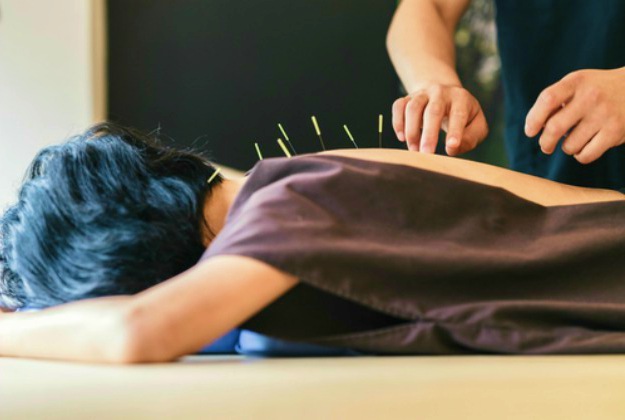

Pain relief is possible without popping nonsteroidal anti-inflammatory drugs (NSAIDs). Check out these alternative pain relievers for a variety of health problems.
Pain Relief Alternatives You Can Try Without the Use of Ibuprofen and Other NSAIDs
1. Puriya Ultra Relief Cream
Puriya Ultra Relief Cream – Maximum Strength Joint Pain Relief? https://t.co/dV0GzJXxCI pic.twitter.com/A0l65u4AoU
— Daryl Ballard (@dball3372) April 11, 2017
Puriya’s Ultra Relief Cream helps manage pain and reduce inflammation in the muscles, nerves, and joints. This pain relief cream also promotes cell rejuvenation to speed up recovery. Use it for ailments such as tennis elbow, tendonitis, and carpal tunnel.
2. Pain Shots
Pain shots deliver medicine to exact points where your body needs pain relief. A doctor will first use an X-ray to find out where to inject the shots. They often use local anesthetics (painkillers) and steroids together. Local anesthetics numb the muscle or nerve. Steroids will ease inflammation, relieving pain. There are many types of shots used for chronic pain. Here are some:
- Epidural Steroid Injections – These shots can help with disc problems, like herniated discs. Doctors inject these shots in the outer part of the spinal column.
- Nerve Root Blocks – These target nerves along the spine which lead to pain in other areas, such as legs or arms.
- Trigger Point Injections – These are beneficial for muscle pain and targeting tight spots in the muscles. These spots can be so tight they squeeze pain receptors, leading to pain in other areas of the body.
Pain shots may not provide total or complete pain relief and benefits can last from 4 weeks to 1 year. The duration depends on the source, type of pain, and prognosis. Some patients may need a series of shots for more long-term results.
3. Radiofrequency Ablation (RFA)
Radiofrequency Ablation (RFA) targets pain receptors, the nerves responsible for sending pain signals to your brain. RFA is helpful for many types of chronic pain including neuropathy and arthritis.
During the RFA procedure, doctors will use a needle with a tip that heats up. They will, then, place the needle close to the nerve. The heat from the needle zaps the nerve so it can’t send pain signals to the brain. RFA provides pain relief for 8 months up to a year. After this period, a doctor can treat you again with the procedure.
4. Pulsed Electromagnetic Field Therapy (PEMF)
https://www.instagram.com/p/BhklwMuACK3/
Physical therapists use Pulsed Electromagnetic Field Therapy (PEMF) for torn cartilage and fractures. Surgeons recommend PEMF to reduce soft tissue inflammation after an operation. PEMF aims to provide immediate pain relief and recovery for these ailments.
PEMF machines will send electromagnetic pulses through your body tissues. These pulses cause the gentle stimulation of anti-inflammatory compounds. PEMF therapy is available at any physical therapy or chiropractic clinic. The cost per session is between $30 and $60.
5. Transcutaneous Electrical Nerve Stimulation (TENS)
Transcutaneous Electrical Nerve Stimulation (TENS) is like PEMF, but it makes use of electricity instead of heat. TENS helps provide pain and inflammation relief.
TENS involves sending a mild electrical current through the tissues and muscles. This current stimulates pain-relieving endorphins and repair compounds. TENS is also beneficial for cognitive health; it helps make you more resilient to stress.
6. Opioids
Opioids are known prescription medicines used for chronic pain. They help reduce or block pain signals to the brain. Common opioids include Methadone, Fentanyl, Oxycodone (OxyContin), or Hydrocodone (Vicodin).
Important: Take opioids at the appropriate dosages. This will help you guard against side effects like:
- Dizziness and Nausea
- Confusion
- Constipation
- Drowsiness
- Vomiting
7. Cryotherapy

Cryotherapy is any treatment which makes use of freezing or near-freezing temperatures. Sudden and intense exposure to cold temperatures makes the body release cold-shock proteins. This special type of protein decreases inflammation and helps speed up recovery.
The most popular form of cryotherapy is sitting in a cryotherapy booth for 3–5 minutes. Other people undergo cryotherapy facials for applying cold treatments on the face only. You can also use a cryotherapy wand for muscle or joint pain.
8. Hot and Cold Compresses
Hot and cold compresses are popular forms of natural pain relief. They are simple and easy to prepare home remedies. The temperature change from hot to cold triggers anti-inflammatory cold-shock and heat-shock proteins. The compression also helps decrease blood flow to injuries. This, then, reduces swelling and inflammation.
9. Curcumin and Other Herbal Painkillers
Curcumin, the bioactive compound found in turmeric, has natural healing properties. It’s one of the natural anti-inflammatory remedies you can use. Curcumin may provide effective and natural pain relief for mild to severe cases. Studies reveal that curcumin can outperform over-the-counter painkillers without any side effects.
10. Acupuncture

Acupuncture procedures involve placing tiny needles at certain points of the body. The strategic placement of the needles may alternative neck pain, back pain, and osteoarthritis. Pain relief with acupuncture comes from the modulation of endorphin levels. This can help inactivate the source of pain.
Do you wanna know 6 natural ways to relieve pain? Watch this video from Body Hub:
Resorting to healthier pain relief alternatives may help improve one’s quality of life. It can aid in taking control over pain without the heavy usage of NSAIDs like ibuprofen. Consult your doctor about alternative and complementary pain relief options.
Which alternative pain reliever do you use regularly? Share your trustworthy options with us in the comments section below!
Up Next: 11 Best Exercises for Lower Back Pain Relief
